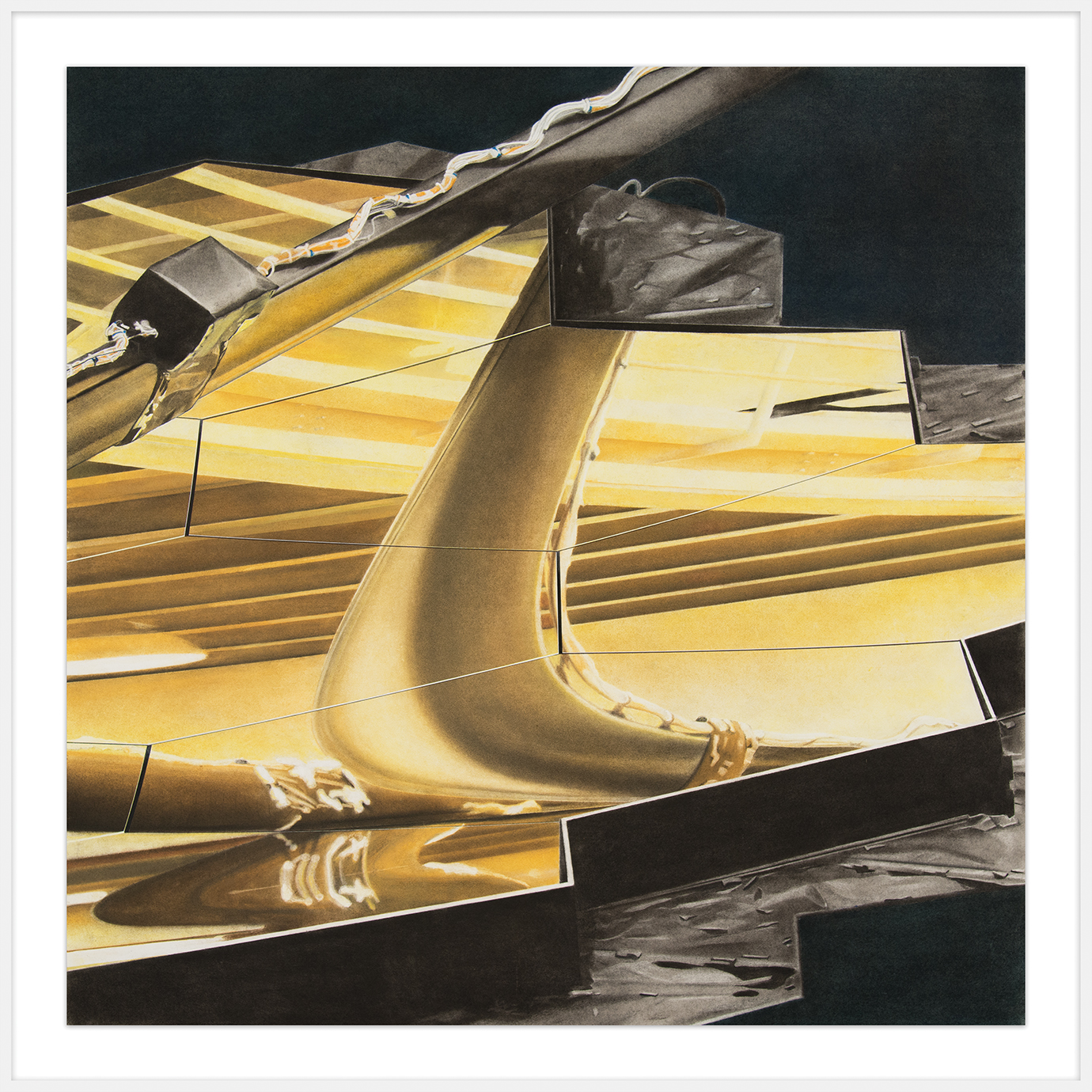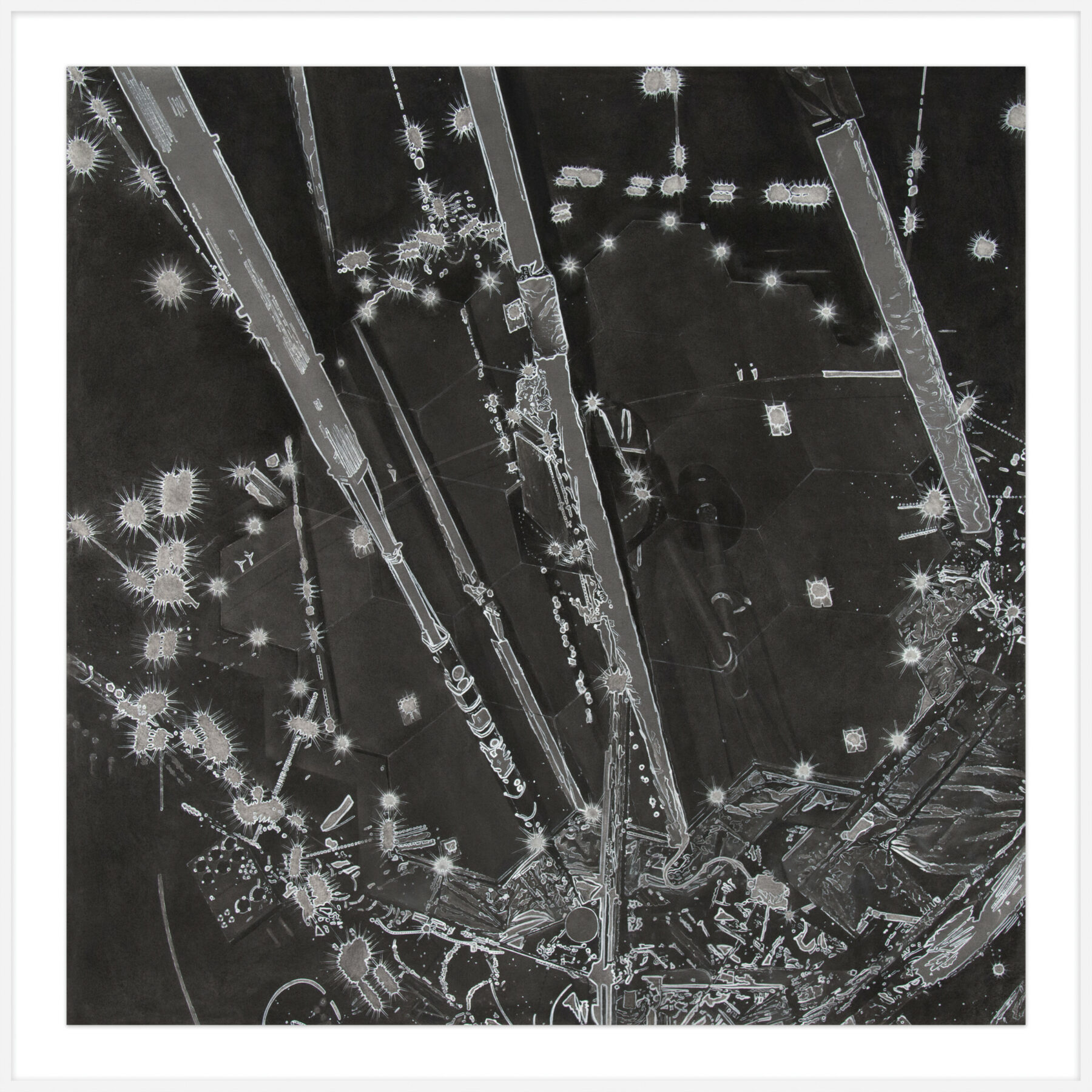Reflections on a Tool of Observation
Artwork inspired by the James Webb Space Telescope.
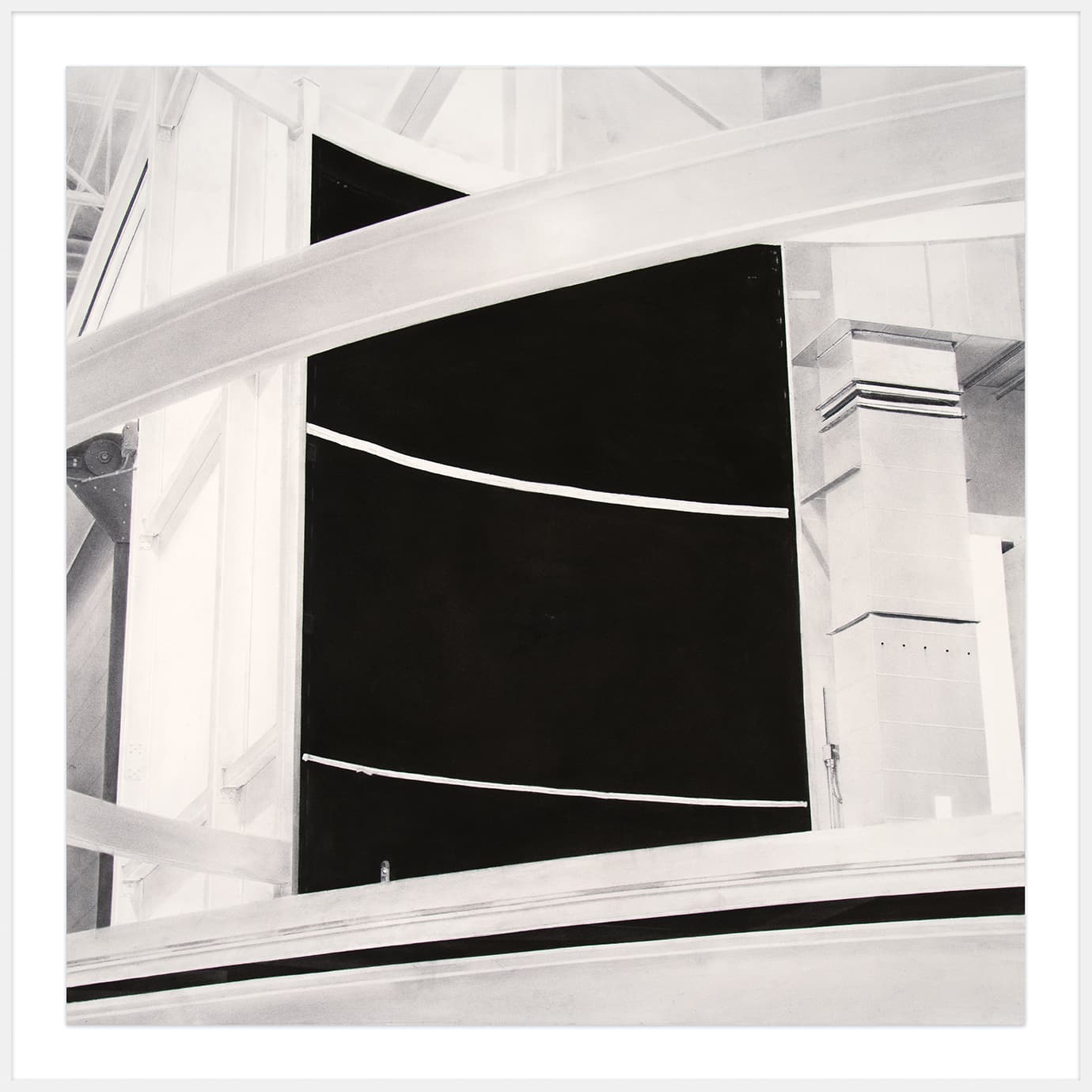
In 2017, Washington, DC-based artist Timothy Makepeace was one of several artists selected by NASA to create artwork inspired by the construction of the James Webb Space Telescope. Makepeace was captivated by the telescope itself. The most powerful space telescope ever built, the orbital infrared observatory will succeed the Hubble Space Telescope when it launches in late 2021.
Seeing the telescope under construction and knowing the device would be sent a million miles away from Earth to look back at some of the universe’s earliest galaxies, Makepeace felt a connection between the mundane and the sublime. These themes guide his resulting work. “Since [2017], I have continued working on a series of drawings based on the photographs I took during my visits, trying to convey some of the awe evoked by this engineering marvel,” he writes. “I have been thinking about the telescope’s intended purpose, once it reaches its location orbiting the sun, as a breakthrough tool for imaging objects which we have never seen, or knew existed, and events that happened at the beginning of time.”
The drawings, rather surprisingly, are rendered in charcoal and pastel. “One thing I have come to enjoy about this process is the idea, and the technique, of using a very imprecise medium, like soft charcoal, to render the image of one of the most technically advanced and precise objects ever devised and constructed by mankind,” Makepeace explains. “Charcoal is also one of the most primitive and ancient tools for drawing, and I’m using it to describe a tool for science that will be shot a million miles into space to help unlock some of the mysteries of our galaxy and the universe. It’s an interesting juxtaposition.”
Images courtesy of the artist.

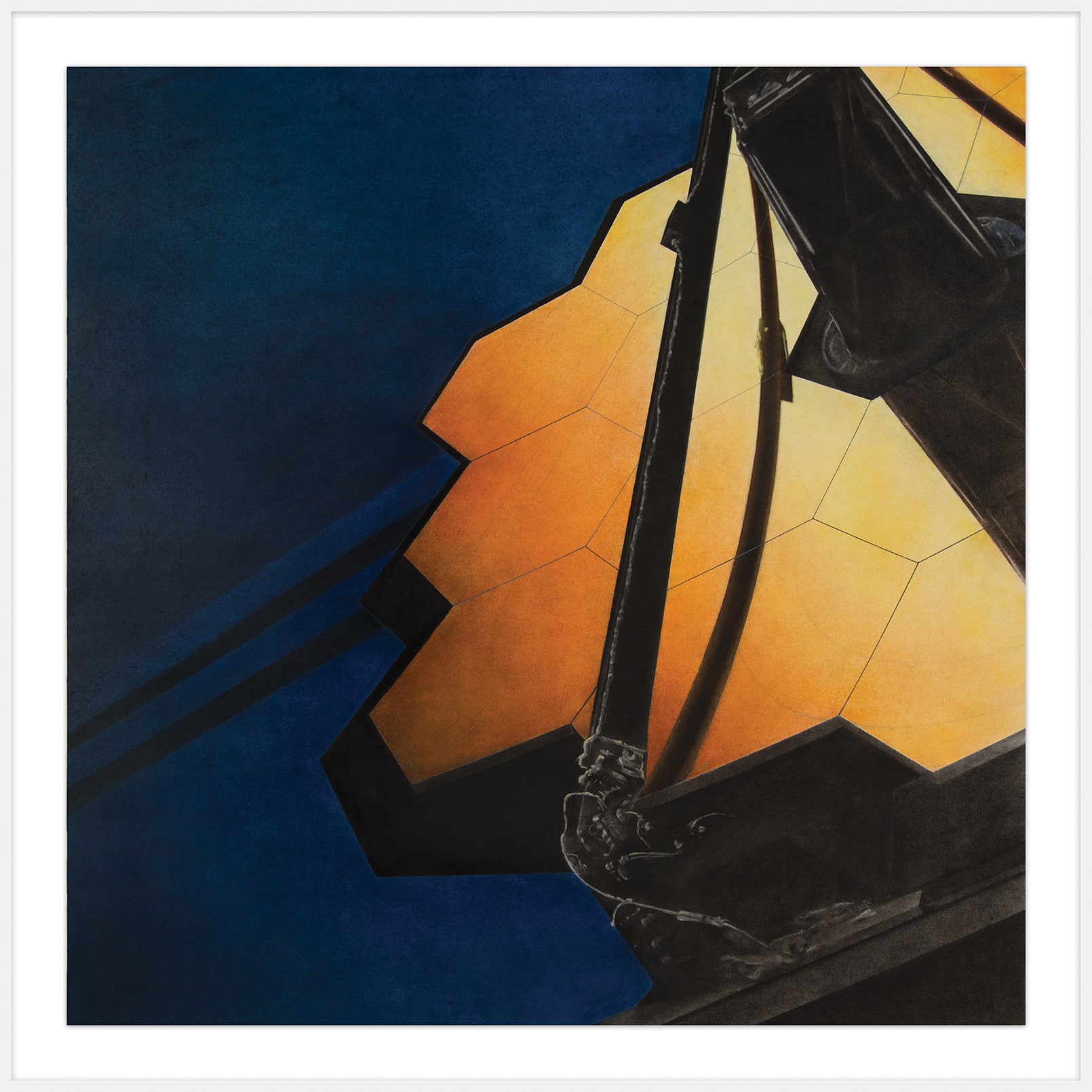
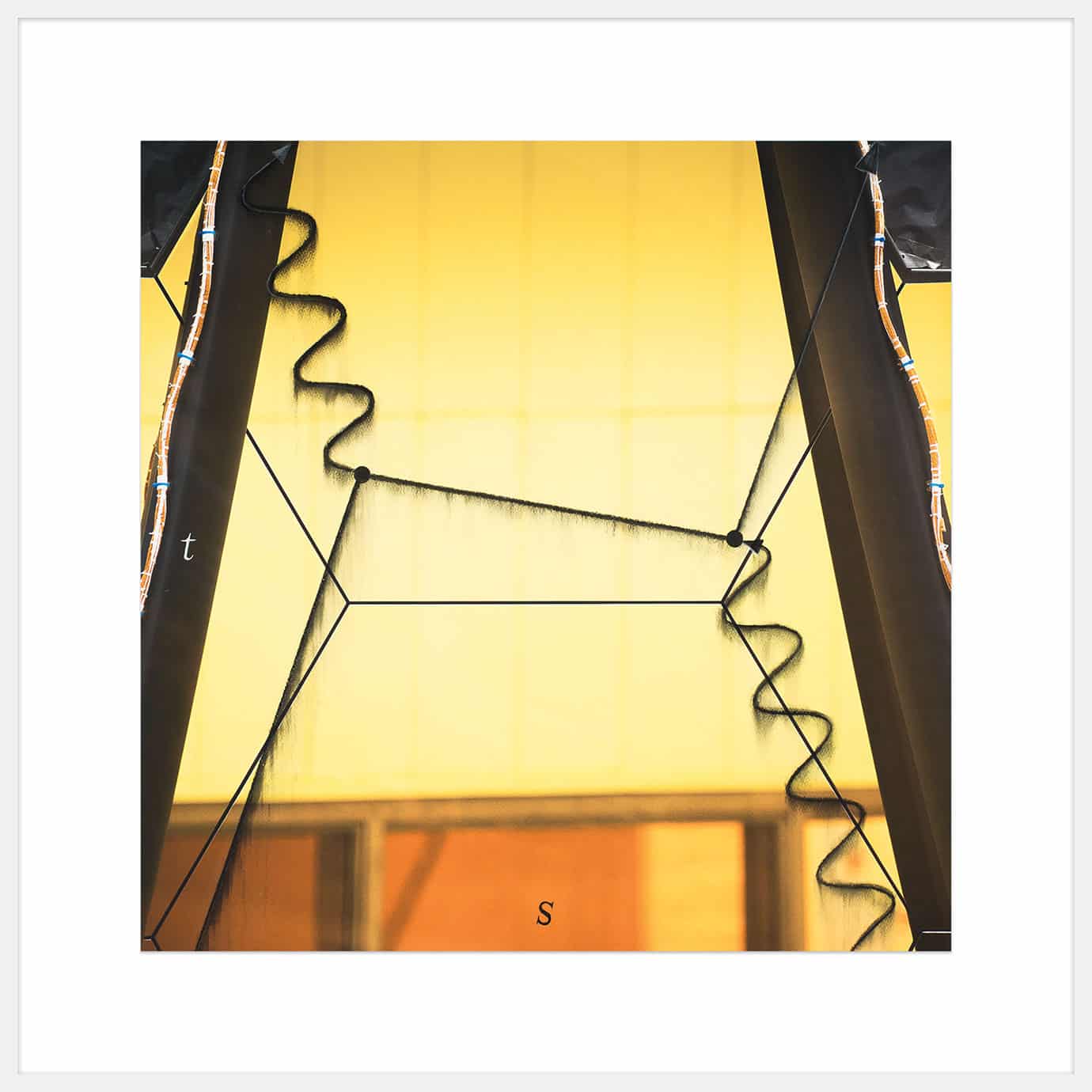
The James Webb Space Telescope can be seen as a sort of time machine; the more distant the objects it images, the further back in time it sees. This is possible because the light emitted by distant objects takes time to reach the telescope. The images produced by the telescope already happened sometime in the past.
The challenge Makepeace set for this work was to juxtapose a rendering of the JWST’s large light-reflecting mirror (and its ability to see back in time), with what’s called a Feynman diagram (after American physicist Richard Feynman), which describes quantum particles and the fluidity of time and our perception of light—the large and the small, the classic and the quantum, and the mutability of time.
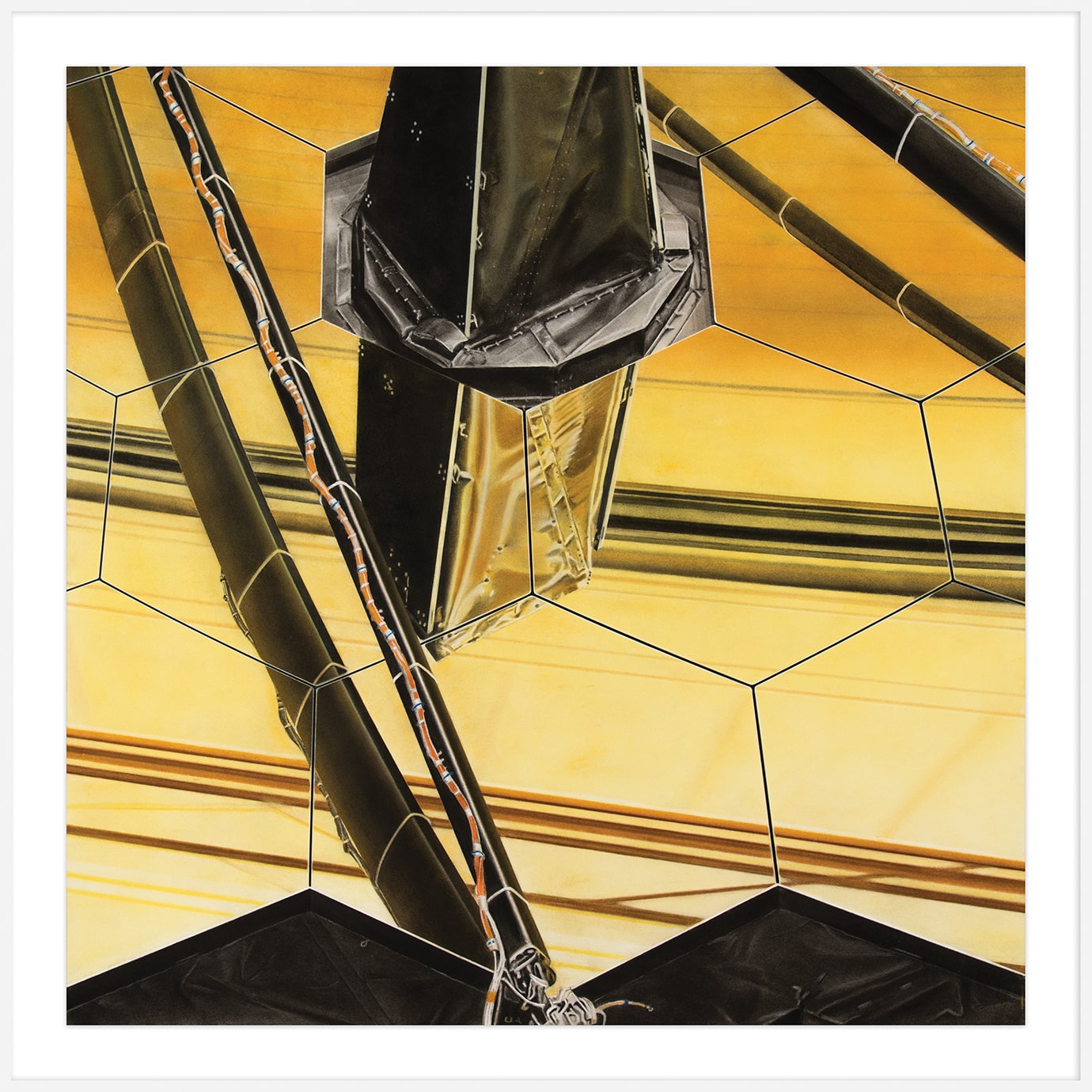
To see more of Timothy Makepeace’s artwork, visit his website: https://tmakepeace.com/

